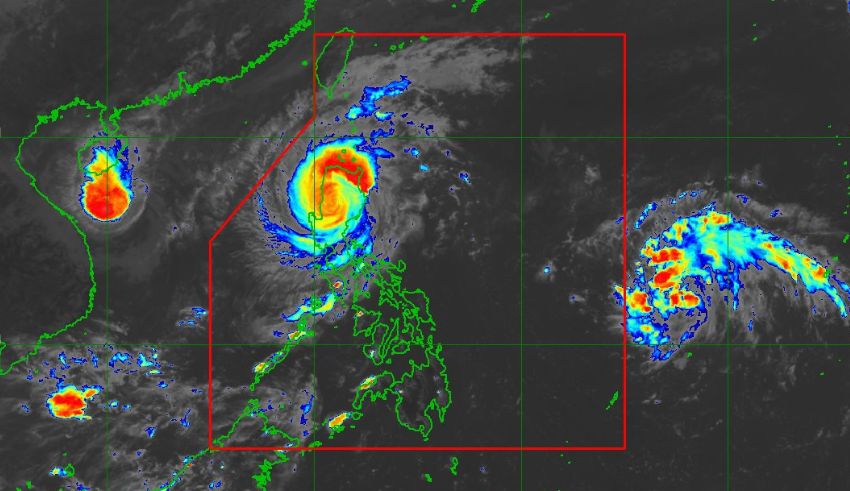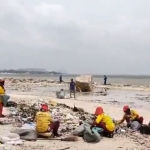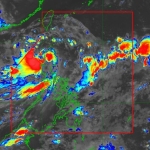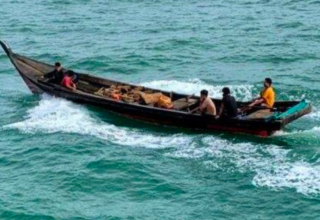
The frequency and intensity of typhoons the Philippines is continually under attack from in November have underlined the urgent need of both improved infrastructure and action against climate change. Recent typhoons Nika (Toraji), Yinxing (Marce), Super Typhoon Kong-rey (Leon), and Severe Tropical Storm Trami have devastated the archipelago affecting hundreds of people and causing significant property and death losses. As these severe weather disasters become more frequent, the longevity of the nation’s catastrophe preparedness and response systems is underlined; moreover, the demand for proactive climate legislation gets more strong than ever.
Arriving at Aurora on November 11, Typhoon Nika carried 180km/h gusts and maximum sustained winds of 130km/h. As the storm severely hit Northern Luzon, widespread evacuations were triggered. Just from Isabela province, approximately 5,220 people from 1,783 homes were evacuated; in Aurora, some 5,244 people—about 1,834 families—found refuge at evacuation sites. Issued for numerous parts of Luzon, Signal No. 4 indicated high wind conditions and the potential of major damage to infrastructure, homes, and agriculture.
Here’s a video of how Typhoon #NikaPH is hitting northern Luzon, especially the province of Isabela, where this video had been shot by Jaydee Gaspi, a resident of Alicia town. @inquirerdotnet pic.twitter.com/u8srPUI1Lg
— Kurt Adrian Dela Peña (@AdrianINQ) November 11, 2024
While evacuations lessened immediate harm to life, the disturbance to families and local businesses highlights the ongoing shortcomings in the national infrastructure. Many homes, particularly in rural regions, are not built to withstand typhoon-strength winds, which underlines the need of robust building solutions in places probably prone to storms.
Typhoon Yinxing, Marce, Causes Death and Structural Damage
Typhoon Yinxing inflicted a horrible toll as it made landfall on November 7. Strong winds and plenty of rain resulted in casualties as well as wrecked homes and businesses. One heartbreaking reminder of the dangers typhoons bring for those without access to a safe haven: a 12-year-old girl died after being crushed in her house.
Yinxing sent constant heavy rain to affected areas, which caused flash floods that cut off roads and isolated communities. There were issued warnings on landslides and severe flooding. These events underscore even more the need for more thorough early-warning systems and improved flood control regulations to protect those living in flood-prone areas.
Among the fiercest typhoons this year, Kong-rey caused major damage all throughout the country but especially in the areas it traversed. Along with Severe Tropical Storm Trami, Kong-rey oversaw 158 officially recorded deaths—one of the worst seasons in modern times.
This dreadful toll asks issues of whether recurrent typhoons could be handled by emergency response systems. Given climate change is expected to raise the frequency of catastrophic events, the need to enhance the nation’s disaster management system becomes ever more urgent. Important steps ahead are building transportation and electrical infrastructure, widening access to critical services during crises, and enlarging evacuation centers.
Keep Reading
Tropical Storm Man-yi and Tropical Depression: New Hazard Rising on Horizon
Although the Philippines is still healing from past typhoons, PAGASA, the official weather agency of the nation, is already monitoring a tropical depression and Tropical Storm Man-yi, both of which provide fresh threats in the next days. Storms generate concerns in various provinces, including Ilocos Norte, Ilocos Sur, La Union, Pangasinan, Cagayan, Isabela, Zambales, Aurora, Quezon, Camarines Norte, Camarines Sur, and Catanduanes.
Local officials are preemptively telling people to leave high-risk areas and intervene as necessary to stop more losses when these new storms approach. The frequency of severe storms questions the country’s ability to handle ongoing natural disasters without enough time for recovery or resource regeneration.
Government response and the need for global climate action
Reacting to the typhoons, the Philippine government and disaster relief groups have been quick to coordinate. Thousands of households have been relocated to safer areas; ports are closed to ensure maritime safety; and emergency aid operations are under progress. Relief groups are providing food, water, and cover to those in need; road-clearing operations are ongoing to provide access to far-off areas.
But the continuous cycle of disaster and rehabilitation seriously strains national resources. If the Philippines wants to truly protect its people, it must become more resilient to climate change, especially supporting infrastructure projects built to withstand severe storms. Major expenses in revised evacuation centers, storm-resistant housing, and flood defenses follow from this.
These typhoons around the world draw attention to the need for a global response on climate change. Though it seldom affects world greenhouse gas emissions, the Philippines is nonetheless among the countries most vulnerable to the effects of climate change. As these storms become more frequent and severe, the demand for global climate money and help for underdeveloped nations becomes more urgent.
The Philippines’ experience with strong typhoons this November reminds us soberingly of the mounting effects of climate change. The lives lost and the devastation communities endure demand a more robust approach for adaptation and climate resilience. The Philippines and the entire community have to realize that as more typhoons are likely in the near future as a major point of investment in resilient infrastructure, improve disaster readiness, and commit to major climate action.
Giving these actions top attention will help us to protect sensitive groups and minimize the terrible consequences of next disasters. It is now the time to act before the next major storm compromises more livelihoods and life.


























